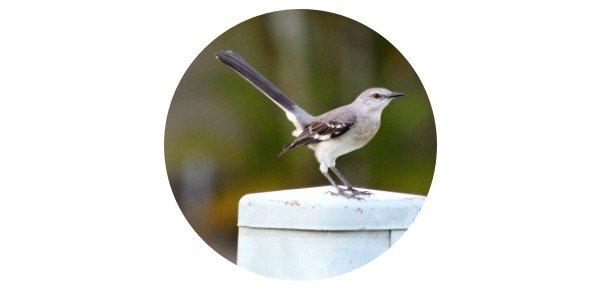Arizona State Bird: Description, Pictures, & Fun Facts
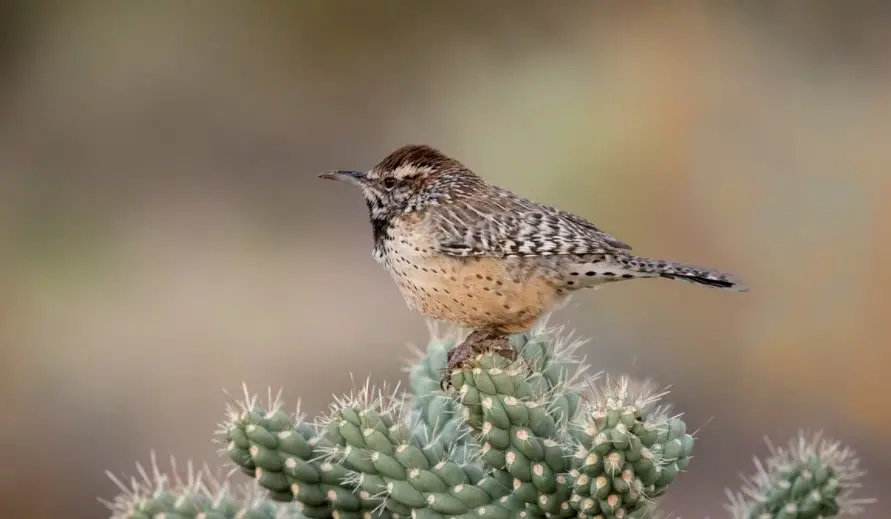
Table of Contents
What is Arizona State Bird?
Arizona is the sixth-largest state by area and the fourteenth-most population in the United States. It is well-known for its arid scenery in the south and woods in the north. The Ringtail is Arizona’s state mammal, but what is the Arizona state bird?
The Cactus Wren (Campylorhynchus brunneicapillus) was named Arizona’s state bird in 1931. The Cactus Wren, the biggest of North American wrens, lives in the United States’ southwest, where it thrives in the dry environment. The bird is protected at the federal level, while not being listed as vulnerable or endangered.
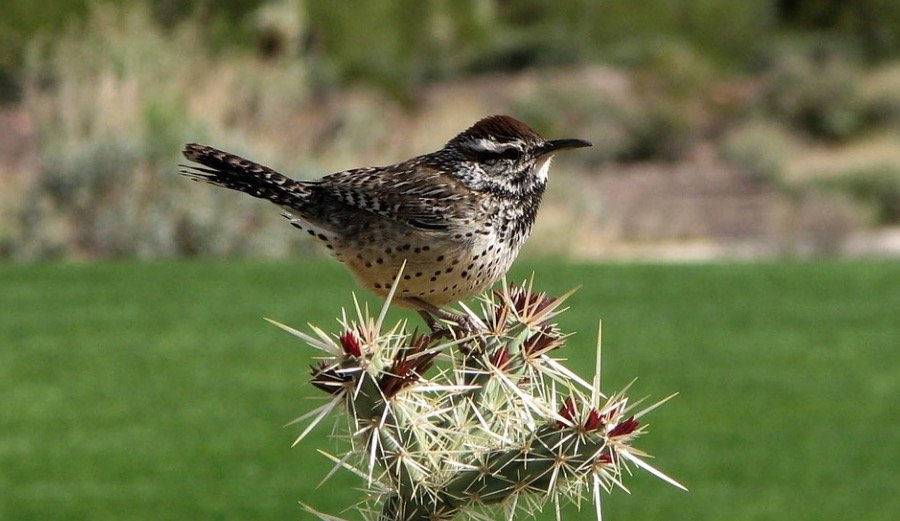
Why is Cactus Wren Arizona State Bird?
The State Bird of Arizona was chosen because of its native status and distinctive singing. It picked the cactus wren, in part, so that the state could have its own bird. Since becoming the 48th state, Arizona has been aware of how many states share birds, despite the fact that there is no scarcity of birds in the United States. The Tucson Audubon Society describes the bird’s song as “a sputtering, staccato-chugging gibberish.” The huge, brazen bird developed a reputation as the desert’s bully.
When did Cactus Wren become Arizona State Bird?
The movement for an official bird started 19 years after Arizona became a state, headed by the General Federation of Women’s Clubs, they desired that the state bird be selected before their Biennial Council meeting in 1931. The Cactus Wren was nominated by the GFWC to the Arizona State Legislature. The lawmakers agreed.
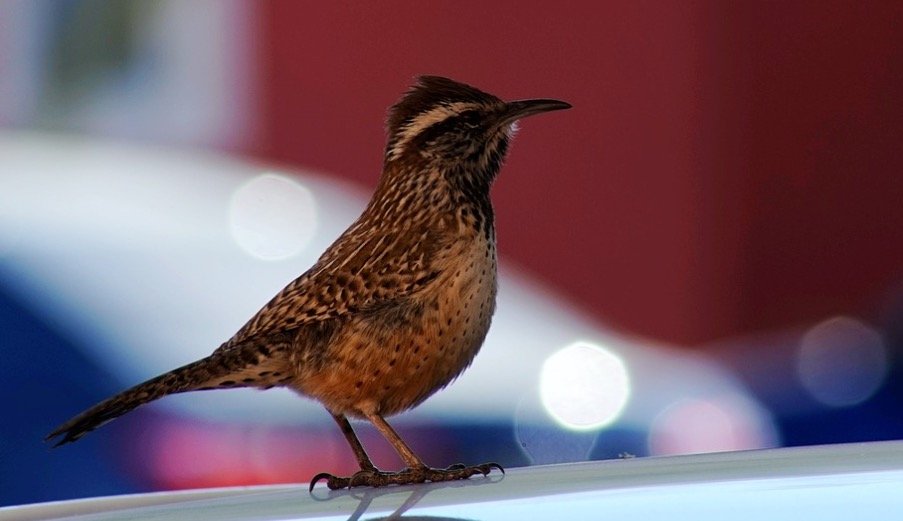
What does Arizona State Bird look like?
With its dark cream and brown colouring, the bird fits well with the desert. The bird has a white eye stripe behind each eye. Cactus Wren has black and brown markings on its breast and neck, and black bars on its tail and wings that contrast with its creamy tan feather hue.
Cactus Wren has brown and white feathers interspersed throughout. Furthermore, Cactus Wren seems to be a cream-coloured brown bird with various black and white markings decorating its body. Cactus Wren’s beak is scarcely curled and resembles the creamy hue of its breast.
The Cactus Wren is 7.1 to 7.5 inches long from head to tail. Cactus Wren has a wingspan ranging from eight to twelve inches. These little birds are just 1.18 to 1.65 ounces in weight. These birds live in the wild and often survive for seven to ten years.
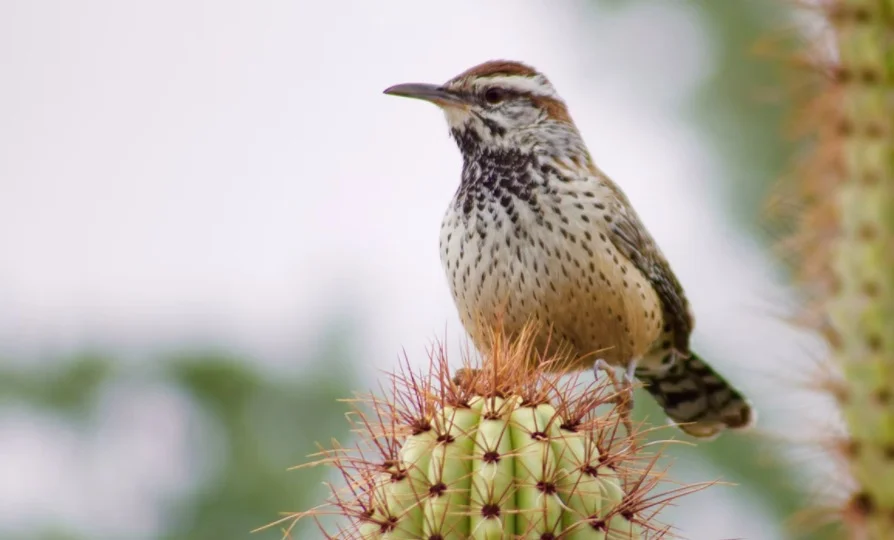
How do Arizona State Bird behave?
The monogamous cactus wrens like having children. They may reproduce many times each year, necessitating the construction of two nests to accommodate all of their young. These hard-working birds may need a third nest to accommodate their many offspring.
Their breeding season lasts from late February to early March each year. After the pair constructs the first nest jointly, the female wren incubates one batch of eggs while the male bird builds the second nest alone.
The nests of these Arizona cactus wrens are shaped like footballs and the same size, and are made of grasses and annual plants. They may contain shreds of fabric or fibre that they scrape while exploring their area. Entry and egress are accomplished by an aperture at one end of the nest.
They choose the cactus as their nesting tree to safeguard their young. They will construct out of acacias, cholla, palo verde, or saguaros. If you have a big enough hanging pot in your yard, this ingenious bird may decide it as the perfect location for its nest.
Male and female cactus wrens are life partners. Because their broods often overlap, these wrens share entire parental responsibilities. The mother bird incubates the second or third set of eggs, while the father bird looks after the first set of young (and sometimes second nest).
They vigorously defend their nests from predators and defend their established area (where they reside all year). Cactus wrens also damage other bird species’ nests by pecking or taking their eggs.
Mated birds perform less often because these mockingbirds utilize their chirping to attract mates. A bird that hasn’t “married” yet sings more frequently in order to attract possible mates. Mockingbirds “date,” thus it’s plural.
The mockingbird, on the other hand, marries for life once they find their partner. These monogamous pairs reproduce in a nest made of grass, twigs, leaves, and sticks. Their offspring grow up and follow in their footsteps.
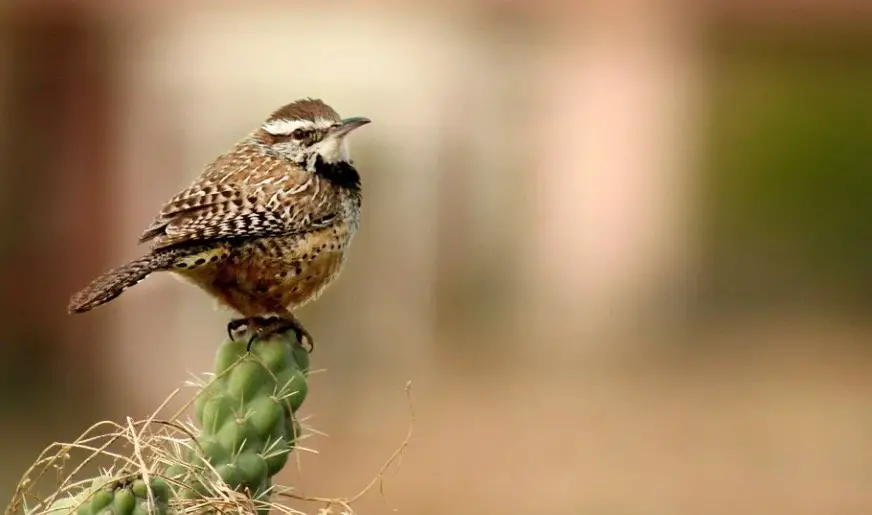
Do Cactus Wren form communities?
Cactus Wrens mate and then breed. The pair creates a “unique welcoming ceremony.” This is accomplished by extending their wings and tails and delivering a harsh-sounding cry.
Each partner makes a growling sound at the other. They then softly peck each other, which is similar to kissing each other. These birds are not migratory. They create and defend territory all year.
These threatening birds seldom fight because they frighten off predators and other birds by fluffing their feathers and tails and shrieking at the other animal, which sounds like “scri.” If you can’t see the bird but can hear it, you’ll recognize it by its raspy-voiced char-char-char or jar-jar-jar cry.
Their “tek” sound warns you or an animal. If you hear the word “rack” often, it means that the wren is hunting for a mate. Chicks make a “pee’p” or “dzip” sound to beg for food.
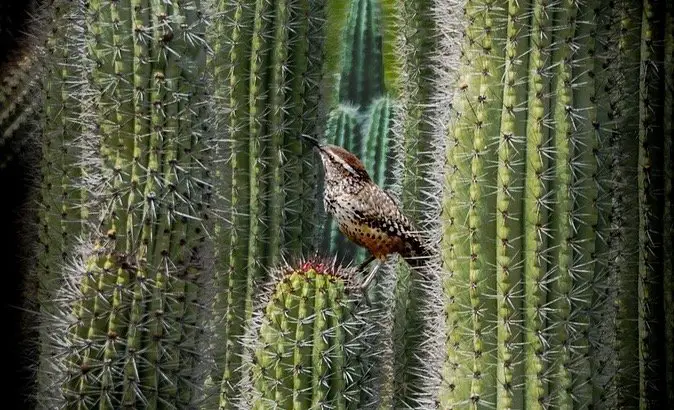
What do Cactus Wren eat?
Cactus wrens are carnivores, primarily insectivores. They eat a variety of desert invertebrates as well as tiny reptiles. They will also consume fruits and seeds. Grasshoppers, beetles, and other arthropods are popular menu dishes.
They savour the nectar of saguaro blossoms. Parents feed their infants. The parents feed the chick entire insects until it grows. They usually start by removing the insects’ legs and wings. When weather or climate change affects their food supplies, these clever birds may get rather inventive.
Cactus wrens have been seen cleaning dead insects off automobile radiator grills. This frequently happens in the late morning hours.
They feed on the ground since they can’t fly far. If turning over leaves and other ground debris does not provide enough food, they will inspect neighbouring automobiles.
